Contact Mode
Non-Contact Mode
Tapping Mode
Force Modulation Mode
Nanotechnology
Materials Science
Biotechnology
Semiconductor Manufacturing
Academia
Research Institutions
Industrial Laboratories
Pharmaceutical Companies
Standard Atomic Force Microscopes
High-Resolution Atomic Force Microscopes
Multi-Mode Atomic Force Microscopes
North America
Europe
South America
Asia Pacific
Middle East and Africa
North America Outlook (USD Billion, 2019-2035)
North America Atomic Force Microscope Market by Technology Type
Contact Mode
Non-Contact Mode
Tapping Mode
Force Modulation Mode
North America Atomic Force Microscope Market by Application Type
Nanotechnology
Materials Science
Biotechnology
Semiconductor Manufacturing
North America Atomic Force Microscope Market by End User Type
Academia
Research Institutions
Industrial Laboratories
Pharmaceutical Companies
North America Atomic Force Microscope Market by Product Type
Standard Atomic Force Microscopes
High-Resolution Atomic Force Microscopes
Multi-Mode Atomic Force Microscopes
North America Atomic Force Microscope Market by Regional Type
US
Canada
US Outlook (USD Billion, 2019-2035)
US Atomic Force Microscope Market by Technology Type
Contact Mode
Non-Contact Mode
Tapping Mode
Force Modulation Mode
US Atomic Force Microscope Market by Application Type
Nanotechnology
Materials Science
Biotechnology
Semiconductor Manufacturing
US Atomic Force Microscope Market by End User Type
Academia
Research Institutions
Industrial Laboratories
Pharmaceutical Companies
US Atomic Force Microscope Market by Product Type
Standard Atomic Force Microscopes
High-Resolution Atomic Force Microscopes
Multi-Mode Atomic Force Microscopes
CANADA Outlook (USD Billion, 2019-2035)
CANADA Atomic Force Microscope Market by Technology Type
Contact Mode
Non-Contact Mode
Tapping Mode
Force Modulation Mode
CANADA Atomic Force Microscope Market by Application Type
Nanotechnology
Materials Science
Biotechnology
Semiconductor Manufacturing
CANADA Atomic Force Microscope Market by End User Type
Academia
Research Institutions
Industrial Laboratories
Pharmaceutical Companies
CANADA Atomic Force Microscope Market by Product Type
Standard Atomic Force Microscopes
High-Resolution Atomic Force Microscopes
Multi-Mode Atomic Force Microscopes
Europe Outlook (USD Billion, 2019-2035)
Europe Atomic Force Microscope Market by Technology Type
Contact Mode
Non-Contact Mode
Tapping Mode
Force Modulation Mode
Europe Atomic Force Microscope Market by Application Type
Nanotechnology
Materials Science
Biotechnology
Semiconductor Manufacturing
Europe Atomic Force Microscope Market by End User Type
Academia
Research Institutions
Industrial Laboratories
Pharmaceutical Companies
Europe Atomic Force Microscope Market by Product Type
Standard Atomic Force Microscopes
High-Resolution Atomic Force Microscopes
Multi-Mode Atomic Force Microscopes
Europe Atomic Force Microscope Market by Regional Type
Germany
UK
France
Russia
Italy
Spain
Rest of Europe
GERMANY Outlook (USD Billion, 2019-2035)
GERMANY Atomic Force Microscope Market by Technology Type
Contact Mode
Non-Contact Mode
Tapping Mode
Force Modulation Mode
GERMANY Atomic Force Microscope Market by Application Type
Nanotechnology
Materials Science
Biotechnology
Semiconductor Manufacturing
GERMANY Atomic Force Microscope Market by End User Type
Academia
Research Institutions
Industrial Laboratories
Pharmaceutical Companies
GERMANY Atomic Force Microscope Market by Product Type
Standard Atomic Force Microscopes
High-Resolution Atomic Force Microscopes
Multi-Mode Atomic Force Microscopes
UK Outlook (USD Billion, 2019-2035)
UK Atomic Force Microscope Market by Technology Type
Contact Mode
Non-Contact Mode
Tapping Mode
Force Modulation Mode
UK Atomic Force Microscope Market by Application Type
Nanotechnology
Materials Science
Biotechnology
Semiconductor Manufacturing
UK Atomic Force Microscope Market by End User Type
Academia
Research Institutions
Industrial Laboratories
Pharmaceutical Companies
UK Atomic Force Microscope Market by Product Type
Standard Atomic Force Microscopes
High-Resolution Atomic Force Microscopes
Multi-Mode Atomic Force Microscopes
FRANCE Outlook (USD Billion, 2019-2035)
FRANCE Atomic Force Microscope Market by Technology Type
Contact Mode
Non-Contact Mode
Tapping Mode
Force Modulation Mode
FRANCE Atomic Force Microscope Market by Application Type
Nanotechnology
Materials Science
Biotechnology
Semiconductor Manufacturing
FRANCE Atomic Force Microscope Market by End User Type
Academia
Research Institutions
Industrial Laboratories
Pharmaceutical Companies
FRANCE Atomic Force Microscope Market by Product Type
Standard Atomic Force Microscopes
High-Resolution Atomic Force Microscopes
Multi-Mode Atomic Force Microscopes
RUSSIA Outlook (USD Billion, 2019-2035)
RUSSIA Atomic Force Microscope Market by Technology Type
Contact Mode
Non-Contact Mode
Tapping Mode
Force Modulation Mode
RUSSIA Atomic Force Microscope Market by Application Type
Nanotechnology
Materials Science
Biotechnology
Semiconductor Manufacturing
RUSSIA Atomic Force Microscope Market by End User Type
Academia
Research Institutions
Industrial Laboratories
Pharmaceutical Companies
RUSSIA Atomic Force Microscope Market by Product Type
Standard Atomic Force Microscopes
High-Resolution Atomic Force Microscopes
Multi-Mode Atomic Force Microscopes
ITALY Outlook (USD Billion, 2019-2035)
ITALY Atomic Force Microscope Market by Technology Type
Contact Mode
Non-Contact Mode
Tapping Mode
Force Modulation Mode
ITALY Atomic Force Microscope Market by Application Type
Nanotechnology
Materials Science
Biotechnology
Semiconductor Manufacturing
ITALY Atomic Force Microscope Market by End User Type
Academia
Research Institutions
Industrial Laboratories
Pharmaceutical Companies
ITALY Atomic Force Microscope Market by Product Type
Standard Atomic Force Microscopes
High-Resolution Atomic Force Microscopes
Multi-Mode Atomic Force Microscopes
SPAIN Outlook (USD Billion, 2019-2035)
SPAIN Atomic Force Microscope Market by Technology Type
Contact Mode
Non-Contact Mode
Tapping Mode
Force Modulation Mode
SPAIN Atomic Force Microscope Market by Application Type
Nanotechnology
Materials Science
Biotechnology
Semiconductor Manufacturing
SPAIN Atomic Force Microscope Market by End User Type
Academia
Research Institutions
Industrial Laboratories
Pharmaceutical Companies
SPAIN Atomic Force Microscope Market by Product Type
Standard Atomic Force Microscopes
High-Resolution Atomic Force Microscopes
Multi-Mode Atomic Force Microscopes
REST OF EUROPE Outlook (USD Billion, 2019-2035)
REST OF EUROPE Atomic Force Microscope Market by Technology Type
Contact Mode
Non-Contact Mode
Tapping Mode
Force Modulation Mode
REST OF EUROPE Atomic Force Microscope Market by Application Type
Nanotechnology
Materials Science
Biotechnology
Semiconductor Manufacturing
REST OF EUROPE Atomic Force Microscope Market by End User Type
Academia
Research Institutions
Industrial Laboratories
Pharmaceutical Companies
REST OF EUROPE Atomic Force Microscope Market by Product Type
Standard Atomic Force Microscopes
High-Resolution Atomic Force Microscopes
Multi-Mode Atomic Force Microscopes
APAC Outlook (USD Billion, 2019-2035)
APAC Atomic Force Microscope Market by Technology Type
Contact Mode
Non-Contact Mode
Tapping Mode
Force Modulation Mode
APAC Atomic Force Microscope Market by Application Type
Nanotechnology
Materials Science
Biotechnology
Semiconductor Manufacturing
APAC Atomic Force Microscope Market by End User Type
Academia
Research Institutions
Industrial Laboratories
Pharmaceutical Companies
APAC Atomic Force Microscope Market by Product Type
Standard Atomic Force Microscopes
High-Resolution Atomic Force Microscopes
Multi-Mode Atomic Force Microscopes
APAC Atomic Force Microscope Market by Regional Type
China
India
Japan
South Korea
Malaysia
Thailand
Indonesia
Rest of APAC
CHINA Outlook (USD Billion, 2019-2035)
CHINA Atomic Force Microscope Market by Technology Type
Contact Mode
Non-Contact Mode
Tapping Mode
Force Modulation Mode
CHINA Atomic Force Microscope Market by Application Type
Nanotechnology
Materials Science
Biotechnology
Semiconductor Manufacturing
CHINA Atomic Force Microscope Market by End User Type
Academia
Research Institutions
Industrial Laboratories
Pharmaceutical Companies
CHINA Atomic Force Microscope Market by Product Type
Standard Atomic Force Microscopes
High-Resolution Atomic Force Microscopes
Multi-Mode Atomic Force Microscopes
INDIA Outlook (USD Billion, 2019-2035)
INDIA Atomic Force Microscope Market by Technology Type
Contact Mode
Non-Contact Mode
Tapping Mode
Force Modulation Mode
INDIA Atomic Force Microscope Market by Application Type
Nanotechnology
Materials Science
Biotechnology
Semiconductor Manufacturing
INDIA Atomic Force Microscope Market by End User Type
Academia
Research Institutions
Industrial Laboratories
Pharmaceutical Companies
INDIA Atomic Force Microscope Market by Product Type
Standard Atomic Force Microscopes
High-Resolution Atomic Force Microscopes
Multi-Mode Atomic Force Microscopes
JAPAN Outlook (USD Billion, 2019-2035)
JAPAN Atomic Force Microscope Market by Technology Type
Contact Mode
Non-Contact Mode
Tapping Mode
Force Modulation Mode
JAPAN Atomic Force Microscope Market by Application Type
Nanotechnology
Materials Science
Biotechnology
Semiconductor Manufacturing
JAPAN Atomic Force Microscope Market by End User Type
Academia
Research Institutions
Industrial Laboratories
Pharmaceutical Companies
JAPAN Atomic Force Microscope Market by Product Type
Standard Atomic Force Microscopes
High-Resolution Atomic Force Microscopes
Multi-Mode Atomic Force Microscopes
SOUTH KOREA Outlook (USD Billion, 2019-2035)
SOUTH KOREA Atomic Force Microscope Market by Technology Type
Contact Mode
Non-Contact Mode
Tapping Mode
Force Modulation Mode
SOUTH KOREA Atomic Force Microscope Market by Application Type
Nanotechnology
Materials Science
Biotechnology
Semiconductor Manufacturing
SOUTH KOREA Atomic Force Microscope Market by End User Type
Academia
Research Institutions
Industrial Laboratories
Pharmaceutical Companies
SOUTH KOREA Atomic Force Microscope Market by Product Type
Standard Atomic Force Microscopes
High-Resolution Atomic Force Microscopes
Multi-Mode Atomic Force Microscopes
MALAYSIA Outlook (USD Billion, 2019-2035)
MALAYSIA Atomic Force Microscope Market by Technology Type
Contact Mode
Non-Contact Mode
Tapping Mode
Force Modulation Mode
MALAYSIA Atomic Force Microscope Market by Application Type
Nanotechnology
Materials Science
Biotechnology
Semiconductor Manufacturing
MALAYSIA Atomic Force Microscope Market by End User Type
Academia
Research Institutions
Industrial Laboratories
Pharmaceutical Companies
MALAYSIA Atomic Force Microscope Market by Product Type
Standard Atomic Force Microscopes
High-Resolution Atomic Force Microscopes
Multi-Mode Atomic Force Microscopes
THAILAND Outlook (USD Billion, 2019-2035)
THAILAND Atomic Force Microscope Market by Technology Type
Contact Mode
Non-Contact Mode
Tapping Mode
Force Modulation Mode
THAILAND Atomic Force Microscope Market by Application Type
Nanotechnology
Materials Science
Biotechnology
Semiconductor Manufacturing
THAILAND Atomic Force Microscope Market by End User Type
Academia
Research Institutions
Industrial Laboratories
Pharmaceutical Companies
THAILAND Atomic Force Microscope Market by Product Type
Standard Atomic Force Microscopes
High-Resolution Atomic Force Microscopes
Multi-Mode Atomic Force Microscopes
INDONESIA Outlook (USD Billion, 2019-2035)
INDONESIA Atomic Force Microscope Market by Technology Type
Contact Mode
Non-Contact Mode
Tapping Mode
Force Modulation Mode
INDONESIA Atomic Force Microscope Market by Application Type
Nanotechnology
Materials Science
Biotechnology
Semiconductor Manufacturing
INDONESIA Atomic Force Microscope Market by End User Type
Academia
Research Institutions
Industrial Laboratories
Pharmaceutical Companies
INDONESIA Atomic Force Microscope Market by Product Type
Standard Atomic Force Microscopes
High-Resolution Atomic Force Microscopes
Multi-Mode Atomic Force Microscopes
REST OF APAC Outlook (USD Billion, 2019-2035)
REST OF APAC Atomic Force Microscope Market by Technology Type
Contact Mode
Non-Contact Mode
Tapping Mode
Force Modulation Mode
REST OF APAC Atomic Force Microscope Market by Application Type
Nanotechnology
Materials Science
Biotechnology
Semiconductor Manufacturing
REST OF APAC Atomic Force Microscope Market by End User Type
Academia
Research Institutions
Industrial Laboratories
Pharmaceutical Companies
REST OF APAC Atomic Force Microscope Market by Product Type
Standard Atomic Force Microscopes
High-Resolution Atomic Force Microscopes
Multi-Mode Atomic Force Microscopes
South America Outlook (USD Billion, 2019-2035)
South America Atomic Force Microscope Market by Technology Type
Contact Mode
Non-Contact Mode
Tapping Mode
Force Modulation Mode
South America Atomic Force Microscope Market by Application Type
Nanotechnology
Materials Science
Biotechnology
Semiconductor Manufacturing
South America Atomic Force Microscope Market by End User Type
Academia
Research Institutions
Industrial Laboratories
Pharmaceutical Companies
South America Atomic Force Microscope Market by Product Type
Standard Atomic Force Microscopes
High-Resolution Atomic Force Microscopes
Multi-Mode Atomic Force Microscopes
South America Atomic Force Microscope Market by Regional Type
Brazil
Mexico
Argentina
Rest of South America
BRAZIL Outlook (USD Billion, 2019-2035)
BRAZIL Atomic Force Microscope Market by Technology Type
Contact Mode
Non-Contact Mode
Tapping Mode
Force Modulation Mode
BRAZIL Atomic Force Microscope Market by Application Type
Nanotechnology
Materials Science
Biotechnology
Semiconductor Manufacturing
BRAZIL Atomic Force Microscope Market by End User Type
Academia
Research Institutions
Industrial Laboratories
Pharmaceutical Companies
BRAZIL Atomic Force Microscope Market by Product Type
Standard Atomic Force Microscopes
High-Resolution Atomic Force Microscopes
Multi-Mode Atomic Force Microscopes
MEXICO Outlook (USD Billion, 2019-2035)
MEXICO Atomic Force Microscope Market by Technology Type
Contact Mode
Non-Contact Mode
Tapping Mode
Force Modulation Mode
MEXICO Atomic Force Microscope Market by Application Type
Nanotechnology
Materials Science
Biotechnology
Semiconductor Manufacturing
MEXICO Atomic Force Microscope Market by End User Type
Academia
Research Institutions
Industrial Laboratories
Pharmaceutical Companies
MEXICO Atomic Force Microscope Market by Product Type
Standard Atomic Force Microscopes
High-Resolution Atomic Force Microscopes
Multi-Mode Atomic Force Microscopes
ARGENTINA Outlook (USD Billion, 2019-2035)
ARGENTINA Atomic Force Microscope Market by Technology Type
Contact Mode
Non-Contact Mode
Tapping Mode
Force Modulation Mode
ARGENTINA Atomic Force Microscope Market by Application Type
Nanotechnology
Materials Science
Biotechnology
Semiconductor Manufacturing
ARGENTINA Atomic Force Microscope Market by End User Type
Academia
Research Institutions
Industrial Laboratories
Pharmaceutical Companies
ARGENTINA Atomic Force Microscope Market by Product Type
Standard Atomic Force Microscopes
High-Resolution Atomic Force Microscopes
Multi-Mode Atomic Force Microscopes
REST OF SOUTH AMERICA Outlook (USD Billion, 2019-2035)
REST OF SOUTH AMERICA Atomic Force Microscope Market by Technology Type
Contact Mode
Non-Contact Mode
Tapping Mode
Force Modulation Mode
REST OF SOUTH AMERICA Atomic Force Microscope Market by Application Type
Nanotechnology
Materials Science
Biotechnology
Semiconductor Manufacturing
REST OF SOUTH AMERICA Atomic Force Microscope Market by End User Type
Academia
Research Institutions
Industrial Laboratories
Pharmaceutical Companies
REST OF SOUTH AMERICA Atomic Force Microscope Market by Product Type
Standard Atomic Force Microscopes
High-Resolution Atomic Force Microscopes
Multi-Mode Atomic Force Microscopes
MEA Outlook (USD Billion, 2019-2035)
MEA Atomic Force Microscope Market by Technology Type
Contact Mode
Non-Contact Mode
Tapping Mode
Force Modulation Mode
MEA Atomic Force Microscope Market by Application Type
Nanotechnology
Materials Science
Biotechnology
Semiconductor Manufacturing
MEA Atomic Force Microscope Market by End User Type
Academia
Research Institutions
Industrial Laboratories
Pharmaceutical Companies
MEA Atomic Force Microscope Market by Product Type
Standard Atomic Force Microscopes
High-Resolution Atomic Force Microscopes
Multi-Mode Atomic Force Microscopes
MEA Atomic Force Microscope Market by Regional Type
GCC Countries
South Africa
Rest of MEA
GCC COUNTRIES Outlook (USD Billion, 2019-2035)
GCC COUNTRIES Atomic Force Microscope Market by Technology Type
Contact Mode
Non-Contact Mode
Tapping Mode
Force Modulation Mode
GCC COUNTRIES Atomic Force Microscope Market by Application Type
Nanotechnology
Materials Science
Biotechnology
Semiconductor Manufacturing
GCC COUNTRIES Atomic Force Microscope Market by End User Type
Academia
Research Institutions
Industrial Laboratories
Pharmaceutical Companies
GCC COUNTRIES Atomic Force Microscope Market by Product Type
Standard Atomic Force Microscopes
High-Resolution Atomic Force Microscopes
Multi-Mode Atomic Force Microscopes
SOUTH AFRICA Outlook (USD Billion, 2019-2035)
SOUTH AFRICA Atomic Force Microscope Market by Technology Type
Contact Mode
Non-Contact Mode
Tapping Mode
Force Modulation Mode
SOUTH AFRICA Atomic Force Microscope Market by Application Type
Nanotechnology
Materials Science
Biotechnology
Semiconductor Manufacturing
SOUTH AFRICA Atomic Force Microscope Market by End User Type
Academia
Research Institutions
Industrial Laboratories
Pharmaceutical Companies
SOUTH AFRICA Atomic Force Microscope Market by Product Type
Standard Atomic Force Microscopes
High-Resolution Atomic Force Microscopes
Multi-Mode Atomic Force Microscopes
REST OF MEA Outlook (USD Billion, 2019-2035)
REST OF MEA Atomic Force Microscope Market by Technology Type
Contact Mode
Non-Contact Mode
Tapping Mode
Force Modulation Mode
REST OF MEA Atomic Force Microscope Market by Application Type
Nanotechnology
Materials Science
Biotechnology
Semiconductor Manufacturing
REST OF MEA Atomic Force Microscope Market by End User Type
Academia
Research Institutions
Industrial Laboratories
Pharmaceutical Companies
REST OF MEA Atomic Force Microscope Market by Product Type
Standard Atomic Force Microscopes
High-Resolution Atomic Force Microscopes
Multi-Mode Atomic Force Microscopes
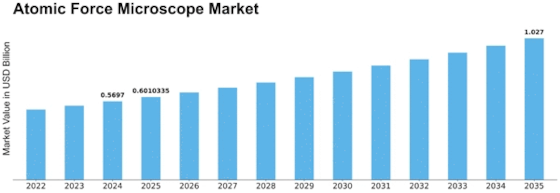
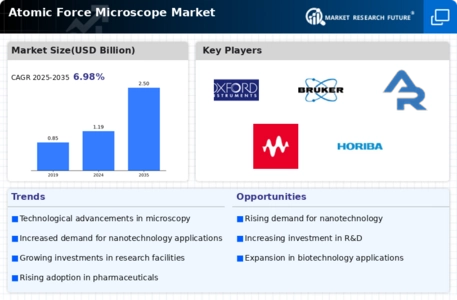

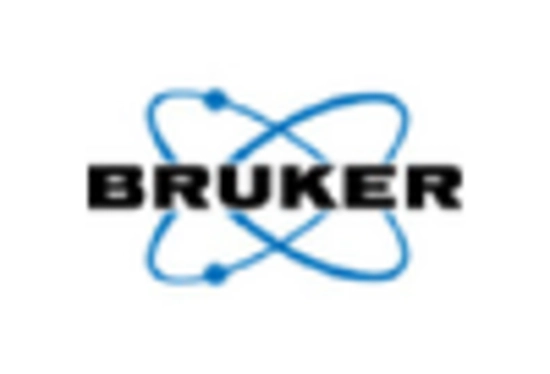
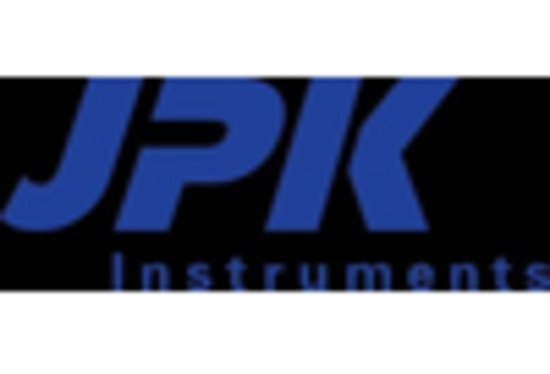
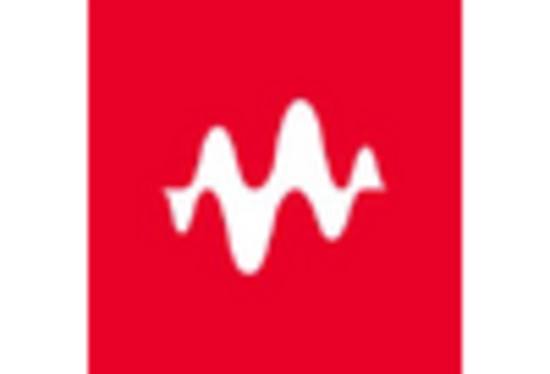
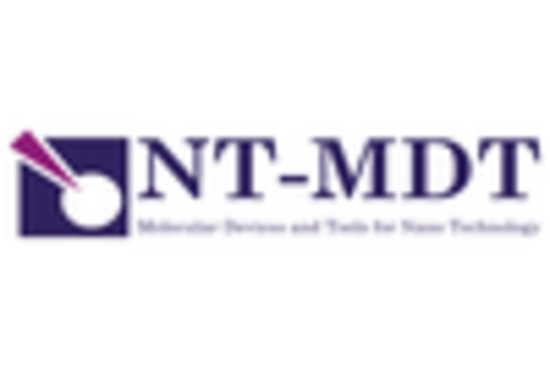
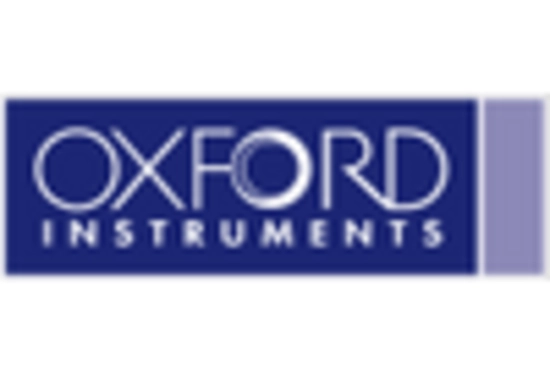

Leave a Comment